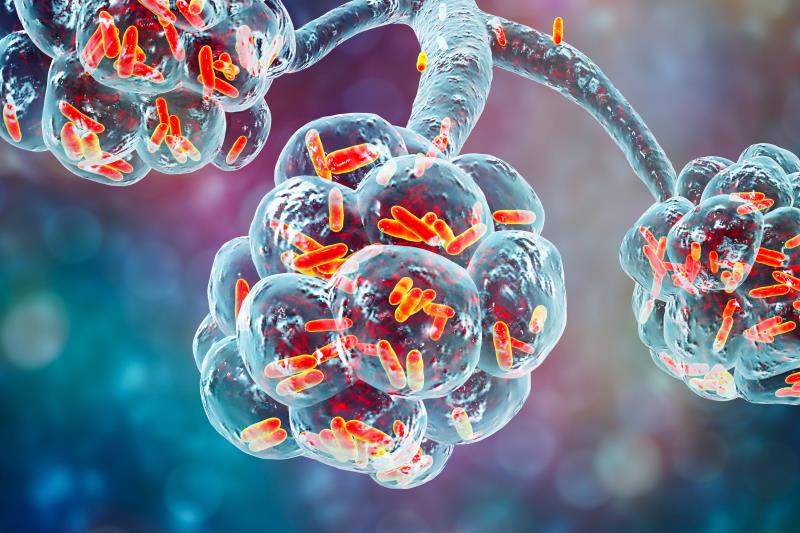
The investigational IGSC-C 20%* was noninferior and bioequivalent to, and had a similar safety profile with, IGIV-C 10%** for the treatment of primary humoural immunodeficiency (PI)***, highlighting the former’s potential as immunoglobulin (Ig)G replacement therapy for immune prophylaxis, according to phase III data presented at AAAAI 2020.
Patients with PI – a group of genetic disorders characterized by a malfunctioning immune system – are highly susceptible to infections, particularly serious bacterial infections (SBIs). [J Clin Immunol 2018;38:129-143] The IgG antibodies in IGSC-C 20% may be protective against infections and/or recurrence. [J Allergy Clin Immunol 2001;108:S139-S146]
“IGSC allows the flexibility of self-administration and provides an alternative for physicians and patients to treat PI without IV infusions,” said the researchers. Moreover, the higher protein concentration in the 20% dose cuts infusion volume and time, hence the easier administration. [Adv Ther 2011;28:521-533] However, only two FDA#-approved IGSC preparations have 20% protein concentration and not all patients have access to this formulation, they added.
“[Our findings] showed that IGSC-C 20% acted similarly as IGIV-C 10%, which … has been used for PI since 2003. [Moreover,] IGSC-C 20% was … safe in adults and children as young as 2 years old,” said the researchers.
Fifty-three participants (mean age 36.8 years, 50.9 percent male) received IGIV-C 10% 300–800 mg/kg during the run-in (n=44; 3–4 months) and intravenous (IV) phases (n=52, of whom 9 directly proceeded to the IV phase; 4–5 weeks) at a dosing interval of 3 or 4 weeks. Participants then transitioned to weekly subcutaneous (SC) infusions of IGSC-C 20% 300–800 mg/kg (n=49) for 24 weeks at a dose adjustment factor (DAF) of 1.37. [AAAAI 2020, abstract 219; Immunotherapy 2019;11:1371-1386]
The geometric least-squares mean ratio for SC vs IV for the primary pharmacokinetic endpoint of steady-state AUC##0–7 days ranged from 1.04 to 1.06. This highlights the noninferiority of the SC preparation to the regularly administered IV dose, said the researchers.
Steady-state mean trough IgG concentration was 1.33-fold higher with IGSC-C 20% than IGIV-C 10% (~1,245 vs ~957 mg/dL). The researchers noted that the individual trough concentrations in the SC phase were above the accepted 500 mg/dL therapeutic threshold.
IgG concentrations with IGIV-C 10% fluctuated, rapidly increasing to 2,075 mg/dL then dropping to 913 mg/dL at the end of the 4-week dosing interval. Conversely, the average concentrations with IGSC-C 20% remained stable between 1,263 and 1,358 mg/dL through 7 days.
The rate of SBIs per subject-year was lower with IGSC-C 20% than with IGIV-C 10% (0.05 vs 0.12). “These annual rates were lower than one SBI/year, the threshold specified as providing substantial evidence of efficacy while receiving IgG replacement therapy,” said the researchers.
Despite the higher number of adverse events (AEs) in the SC vs the run-in + IV phases (141 AEs in 41 participants vs 79 in 33 participants), most (>96 percent) were mild to moderate in severity. The rates of potentially related AEs per infusion were similar in the run-in + IV and the SC phases (0.05 vs 0.058 events/infusion). [AAAAI 2020, abstract 095]
“[Taken together,] IGSC-C 20% provided comparable overall total IgG exposure to IGIV-C 10%, with higher mean IgG trough values, and less fluctuations in IgG concentrations. IGSC-C 20% is well-tolerated and has a safety profile similar to IGIV-C 10%,” said the researchers.
It should be noted however that despite having very young participants, this cohort was relatively small, with only two individuals falling between the 2–5 age range. Therefore, the findings for very young children are limited to this study, they said.
The researchers are hopeful that the current findings, coupled with those of another phase III trial on IGSC-C 20% employing a 1:1 DAF, may guide clinicians in managing this rapidly evolving disease with IGSC-C 20%.